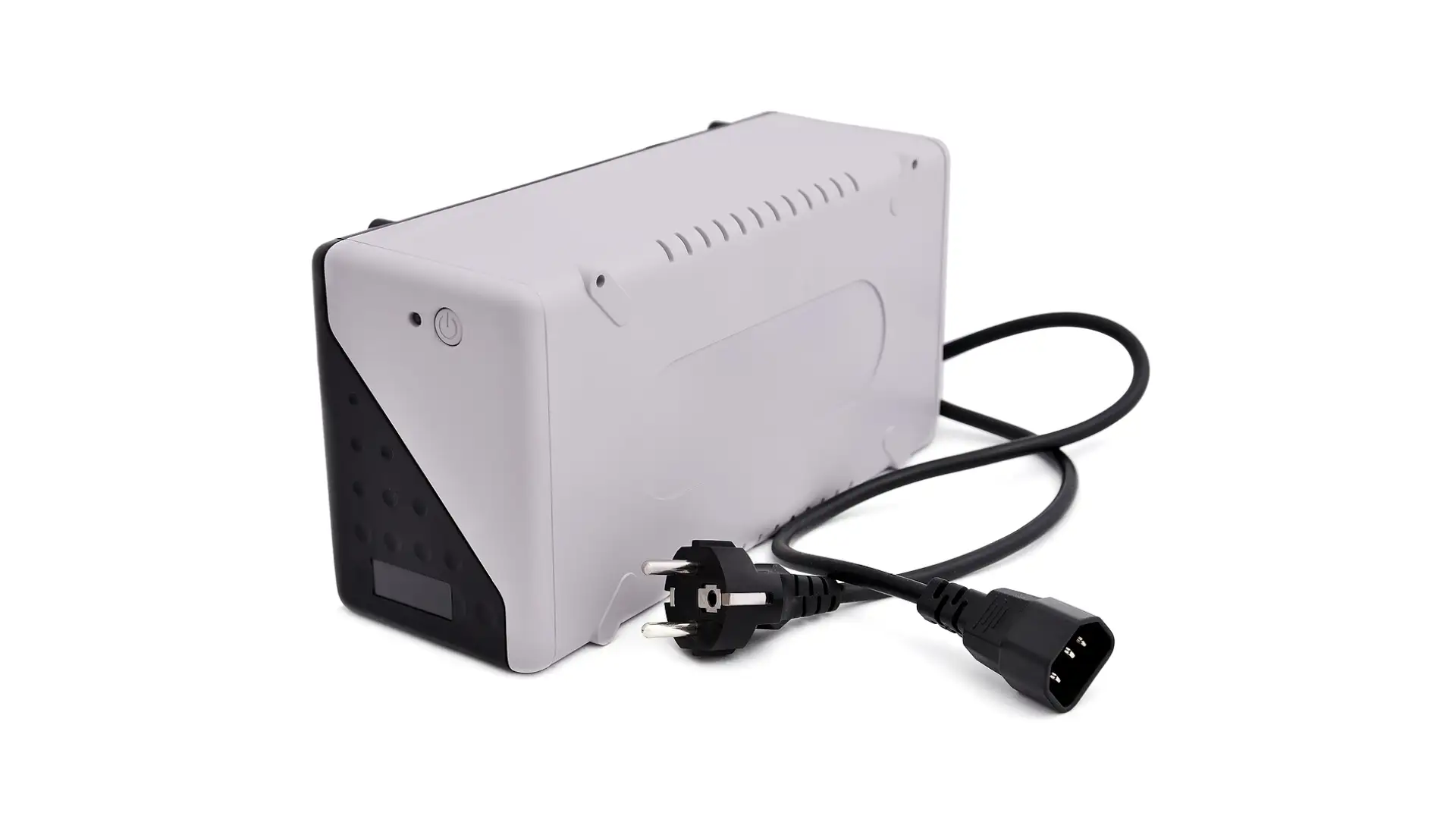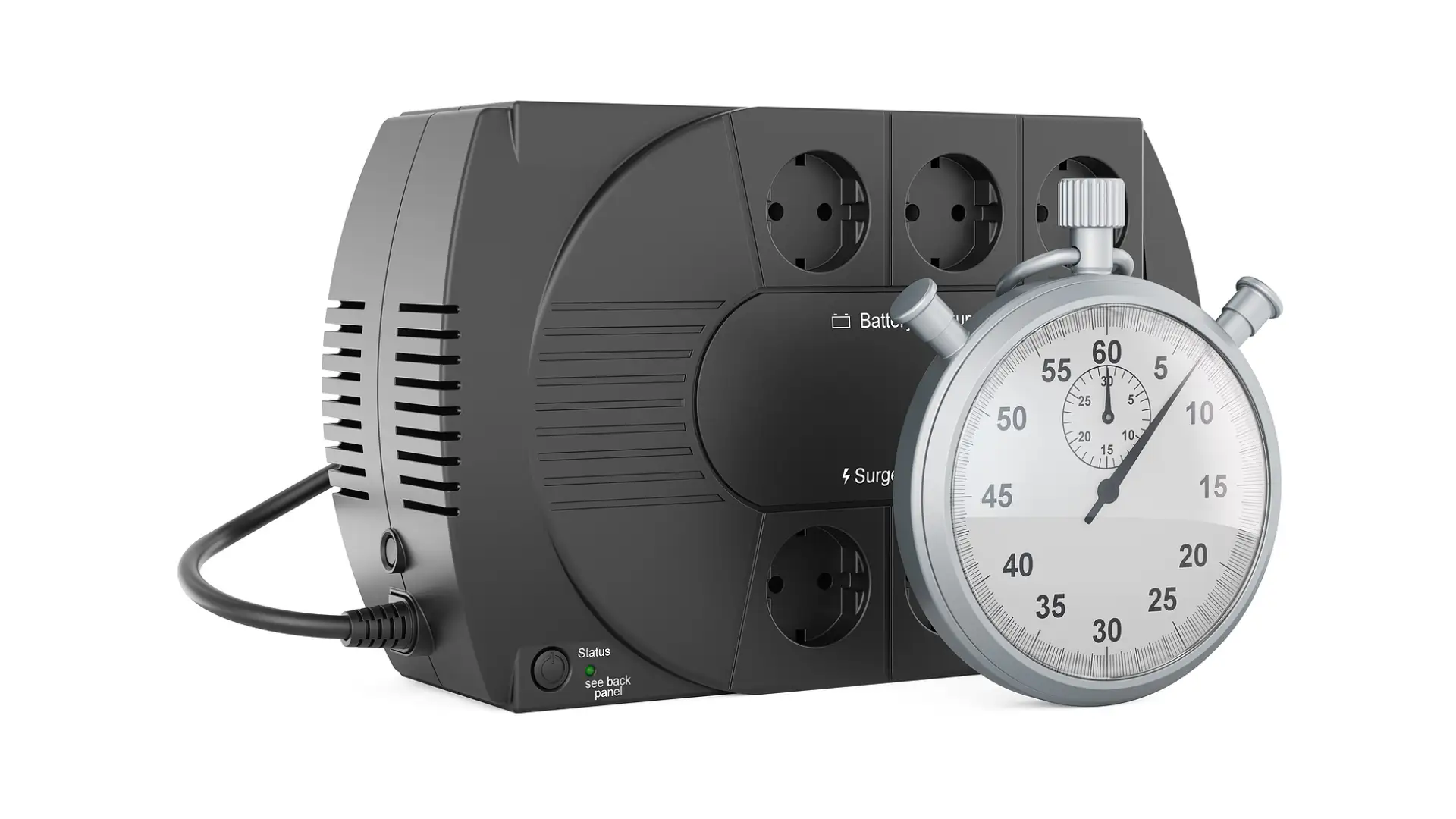
Cost of Uninterruptible Power Supply
In the digital age, where businesses rely heavily on continuous operation and data integrity, the importance of Uninterruptible Power Supply (UPS) systems cannot be overstated. These systems serve as a safety net against power disruptions, ensuring seamless operation and safeguarding critical equipment from damage.
However, as with any investment, understanding the cost implications of implementing UPS solutions is crucial for businesses of all sizes. In this guide, we delve into the intricacies of the Cost of Uninterruptible Power Supply, exploring factors that influence pricing, cost-effective strategies, and the long-term benefits of investing in UPS systems.
What is an Uninterruptible Power Supply (UPS)?
Before delving into the uninterruptible power supply cost systems, it's important to understand what a UPS is and how it works. A UPS is a device that helps provide continuous power to connected devices when the main power source fails.
It is particularly important in protecting hardware such as computers, data centers, telecommunication equipment, and other electrical equipment from unexpected power disruptions that could cause injuries, fatalities, data loss, or business disruption.

Understanding the Cost Dynamics of Uninterruptible Power Supply
The cost of implementing a UPS system can vary significantly depending on various factors. Understanding these factors is essential for businesses to make informed decisions:
- Capacity and Scalability: The size and capacity of the UPS unit directly impact its cost. Larger units capable of supporting extensive loads typically command higher prices. Additionally, scalability options for future expansion may also influence the initial investment.
- Technology and Features: UPS systems come with a range of features, from basic standby units to advanced online double-conversion systems. The technology and features integrated into the UPS affect its cost, with more sophisticated systems offering greater reliability and efficiency at a higher price point.
- Battery Backup Runtime: The duration for which the UPS can provide backup power during an outage is a crucial consideration. UPS units with longer battery backup runtimes typically come at a higher cost but provide enhanced protection and uptime.
- Redundancy and Reliability: Businesses requiring high levels of uptime may opt for redundant UPS configurations to mitigate the risk of system failure. Redundancy features add to the overall cost but provide added reliability and fault tolerance.
- Brand and Manufacturer: Established brands and reputable UPS manufacturers often command higher prices for their products. While these may entail a higher initial investment, they often offer superior build quality, reliability, and after-sales support.
Evaluating Uninterruptible Power Supply UPS Price Points
When considering the investment in an uninterruptible power supply (UPS), it's crucial to evaluate UPS price points meticulously. The market offers a range of UPS solutions catering to diverse business needs and budgets.
Businesses must weigh factors such as capacity, features, and brand reputation against the uninterruptible power supply UPS price to ensure they procure a solution that aligns with their requirements without overspending.
Conducting a thorough comparison of UPS uninterruptible power supply price points enables businesses to identify cost-effective options without compromising on reliability or performance. Additionally, exploring bundled packages or negotiating pricing with vendors can further optimize the value proposition, allowing businesses to acquire high-quality UPS systems at competitive prices.
By striking the right balance between upfront investment and long-term benefits, businesses can maximize the value derived from their UPS uninterruptible power supply price expenditure.

Calculating Total Cost of Ownership (TCO)
In addition to the upfront purchase cost, businesses must consider the total cost of ownership (TCO) when evaluating UPS solutions. TCO encompasses various factors, including:
- Installation and Integration: Costs associated with installation, configuration, and integration of the UPS system into existing infrastructure.
- Maintenance and Servicing: Expenses related to routine maintenance, inspections, and potential repairs over the system's lifespan.
- Energy Efficiency: Energy consumption and operational costs associated with running the UPS system, factoring in efficiency ratings and load profiles.
- Downtime and Business Impact: The potential cost of downtime due to power outages and the impact on business operations, including lost revenue, productivity, and reputation damage.
Strategies for Managing the Cost of Uninterruptible Power Supply
- Right-Sizing UPS Systems
One of the most effective strategies for managing the cost of UPS implementation is right-sizing the system to match the specific needs of the business.
Oversized UPS units not only incur higher upfront costs but also result in unnecessary expenditure on maintenance and energy consumption.
Conducting a thorough assessment of power requirements and load profiles enables businesses to select UPS systems tailored to their actual needs, optimizing both performance and cost-effectiveness.
- Exploring Total Cost of Ownership (TCO)
While upfront costs are a significant consideration, focusing solely on purchase price can overlook the long-term cost implications of UPS ownership.
By analyzing the total cost of ownership over the system's lifespan, businesses can identify cost-saving opportunities and prioritize investments that offer the best return on investment (ROI).
Factors such as energy efficiency, maintenance requirements, and reliability play a crucial role in TCO calculations, allowing businesses to make informed decisions that align with their budgetary constraints and operational objectives.
- Considering TCO Benefits
Investing in high-quality UPS systems may involve a higher initial outlay, but the long-term benefits often outweigh the upfront cost. By prioritizing reliability, efficiency, and scalability, businesses can minimize the risk of downtime, protect critical equipment, and maintain uninterrupted operation even in the face of adverse conditions.
Furthermore, the potential cost savings derived from reduced downtime, lower energy consumption, and extended equipment lifespan can contribute to significant ROI over time, making the investment in UPS systems a strategic decision for businesses looking to optimize their infrastructure and mitigate operational risks.

Financing and Leasing Options for Uninterruptible Power Supply (UPS) Systems
In the dynamic landscape of business operations, managing budget constraints and optimizing capital expenditure are paramount considerations for sustainable growth. In this context, exploring financing and leasing options emerges as a strategic approach for acquiring Uninterruptible Power Supply (UPS) systems, crucial for safeguarding operations against power disruptions. Let's delve deeper into how these options can offer flexibility, scalability, and financial advantages for businesses:
Financing Solutions:
Financing arrangements enable businesses to acquire UPS systems while spreading the investment cost over a period, typically through loans or installment plans.
This approach minimizes the immediate financial impact, allowing businesses to allocate resources more efficiently and preserve capital for other strategic initiatives. Key aspects of financing solutions include:
- Minimized Upfront Costs: By amortizing the cost of UPS investments over time, businesses can avoid significant upfront expenses, easing the strain on cash flow and budgetary constraints.
- Flexible Payment Terms: Financing options often offer flexibility in payment terms, allowing businesses to tailor repayment schedules to their cash flow cycles and operational needs.
- Preservation of Capital: By opting for financing, businesses can preserve capital for essential investments and operational expenses, maintaining financial flexibility and liquidity.
Leasing Arrangements:
Leasing UPS systems provides businesses with the flexibility to access critical infrastructure without the need for substantial upfront investment. Leasing agreements typically involve paying a fixed monthly fee for equipment usage, offering advantages such as:
- Scalability and Upgradability: Leasing allows businesses to adapt to evolving needs by easily upgrading or expanding UPS systems as required, without incurring additional upfront costs.
- Maintenance and Support: Leasing agreements often include maintenance and support services, relieving businesses of the burden of managing equipment upkeep and ensuring optimal performance throughout the lease term.
- Risk Mitigation: Leasing mitigates the risk associated with equipment ownership, such as depreciation and obsolescence, by transferring these responsibilities to the lessor.
FAQs: Clearing Your Doubts About Uninterruptible Power Supply Costs
1. What factors contribute to the cost of uninterrupted power supply?
The cost of uninterrupted power supply (UPS) systems is influenced by various factors such as capacity, technology, battery backup runtime, redundancy features, and the reputation of the manufacturer. Additionally, considerations like installation, maintenance, and energy efficiency also contribute to the overall cost of ownership.
2. How can I determine the right size of UPS for my business?
Determining the appropriate size of UPS for your business involves assessing your power requirements and load profiles. Conducting a thorough analysis of the equipment you need to protect and estimating the power consumption during normal operation helps in selecting a UPS system with the right capacity to meet your needs without overspending on unnecessary features.
3. Are there any cost-effective strategies for managing UPS expenses?
Yes, several cost-effective strategies can help manage UPS expenses. Right-sizing the UPS system to match your specific needs, exploring total cost of ownership (TCO) benefits, and considering factors like energy efficiency and maintenance requirements can contribute to optimizing UPS costs over the system's lifespan.
4. How does the cost of uninterrupted power supply compare to the potential costs of downtime?
While the upfront cost of implementing a UPS system may seem significant, it pales in comparison to the potential costs associated with downtime. Downtime can result in lost revenue, decreased productivity, and damage to the business's reputation. Investing in UPS systems helps mitigate these risks by ensuring uninterrupted operation and safeguarding critical equipment during power outages.
5. What is the typical cost range for uninterrupted power supply systems?
The cost of uninterrupted power supply systems can vary widely depending on factors such as capacity, technology, features, and brand reputation. Generally, UPS prices range from a few hundred dollars for smaller units to several thousand dollars for larger, more advanced systems with enhanced features and capabilities.
6. Where can I find reliable information about the cost of uninterrupted power supply?
Reliable information about the cost of uninterrupted power supply systems can be obtained from reputable manufacturers, industry publications, and online resources dedicated to power protection solutions. Additionally, consulting with experts in the field and leveraging tools such as UPS selectors and TCO calculators can help businesses make informed decisions regarding UPS investments.
7. How can I get an accurate quote for an uninterrupted power supply system for my business?
To obtain an accurate quote for an uninterrupted power supply system, businesses should contact trusted UPS suppliers or manufacturers directly. Providing detailed information about your specific requirements, including power capacity, desired features, and installation considerations, enables suppliers to tailor their offerings and provide customized quotes that align with your budget and operational needs.
8. What are the potential long-term benefits of investing in uninterrupted power supply systems?
Investing in uninterrupted power supply systems offers several long-term benefits, including minimized downtime, protection of critical equipment, enhanced reliability, and potential cost savings derived from reduced energy consumption and extended equipment lifespan. Additionally, UPS systems contribute to maintaining business continuity and safeguarding against the potential financial and reputational risks associated with power outages.
Cost of Uninterruptible Power Supply Conclusion
In conclusion, understanding the cost of Uninterruptible Power Supply is essential for businesses seeking to safeguard their operations and minimize the risk of downtime.
By considering factors such as capacity, technology, and total cost of ownership, businesses can make informed decisions that balance performance and cost-effectiveness.
While upfront costs are a significant consideration, prioritizing reliability, efficiency, and scalability can yield substantial long-term benefits and ensure uninterrupted operation in today's increasingly digital landscape.
Source
https://www.usaid.gov/energy/powering-health/system-components/uninterruptible-power-supplies
continue reading
Related Posts
Uninterruptable Power Supply Company In my daily life, both personally […]
Uninterruptable Power Supplies In today's world, where technology keeps us […]
Uninterruptible Power Supply For Laptop In today's fast-paced digital world, […]



